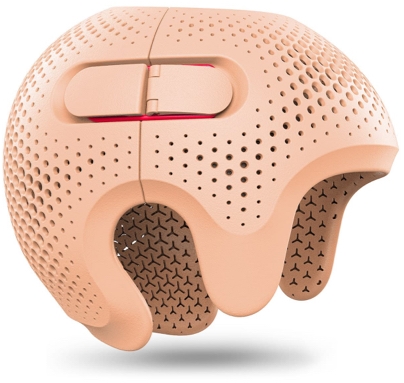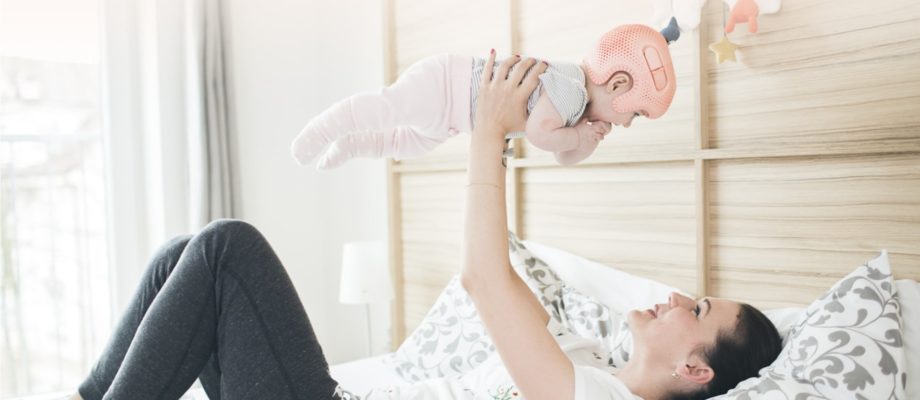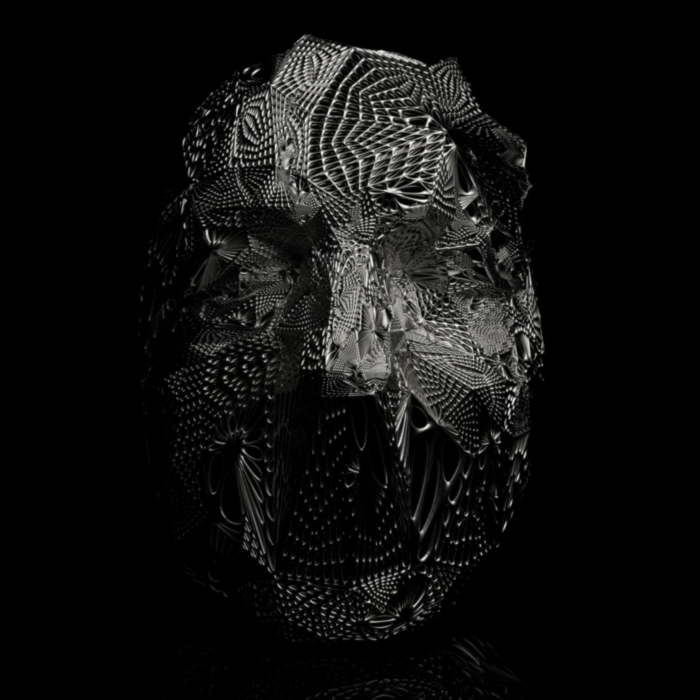Challenge: Create a more modern and comfortable version of an orthotic helmet.
The solution: Lighter, more breathable and visually appealing prototype made use additive technologies
Impact:
- a 30% reduction in weight compared to conventional solutions
- perforated structure on 80% of the helmet surface maximizing breathability
- reduced number of parts due to an seamless helmet design that includes comfort lining and integrated fastening
Result: Starting up mass production and expansion into 31 global markets.
Service: Rapid prototype production, End-product manufacturing
Material: PA1101 (ensuring sufficient flexibility and impact resistance)
Technology: Selective Laser Sintering
Post-processing: Abrasive blasting, Dip-dyeing
A diagnosis which affects half of all newborns
Plagiocephaly, or positional deformity of the baby’s head, is a widespread postpartum diagnosis indicated in up to 50% of babies. Its increase was inadvertently caused by the positioning of the baby on its back to prevent sudden infant death syndrome.
Deformities generally only take 4 to 6 months to be treated with the help of an orthotic helmet. These helmets are commonly made by hot-drawing plastic, making the final product unnecessarily heavy and non-breathable. Due to these shortcomings as well as a limited choice of standard sizes, such a helmet often causes significant discomfort during wear. As a result, the skin of the head sweats excessively and the helmet tends to slip.

Computer design in action
We were invited to address these challenges by the industry’s leading orthotic brand, Medical Invent, for whom we produced prototypes and the first end-use products of this innovative helmet. It is 30% lighter, maximally breathable and can be quickly and comfortably removed from the child’s head. This is all due to the greater freedom of design and rapid manufacturing which additive technology makes possible.
"Working effectively and closely with ONE3D helps us take our healthcare products to a whole new level."
Aleš Grygar, Co-founder and Chief Designer, Invent Medical
4 Steps to Proper Development
1. 3D Scanning
With the help of mobile 3D scanning technology, a digital map of the child’s head is created, allowing the helmet to be tailor-made and guaranteeing maximum wearing comfort.
2. Design aided by algorithms
From the scanned data, a 3D model is created. This helps build the appropriate algorithms, which, using freedom of design, design the optimal shape and characteristics of the resulting helmet. The user configurator then allows parents to see the entire model and choose the desired color before creating the helmet.
3. Additive manufacturing and post-processing
The helmet itself was produced using SLS technology, which offers tremendous freedom in design production compared to conventional procedures. The resulting product has an organic character and very flexible structures. The surface porosity of the chosen PA1101 material also allows the product to be colored under the surface, guaranteeing resistance to normal wear.
4. Delivery and treatment
The finished product is handed over by medical personnel at the clinic and the child’s progress is regularly checked by medical professionals.
From the head to the ankles
In the medical sector, future development is focused on the multi-material production of other types of orthoprosthetic devices, such as ankle and wrist braces, prosthetic masks or shoe inserts, giving clients better treatment, whether for a developmental defect or a post-injury return to normal life.









